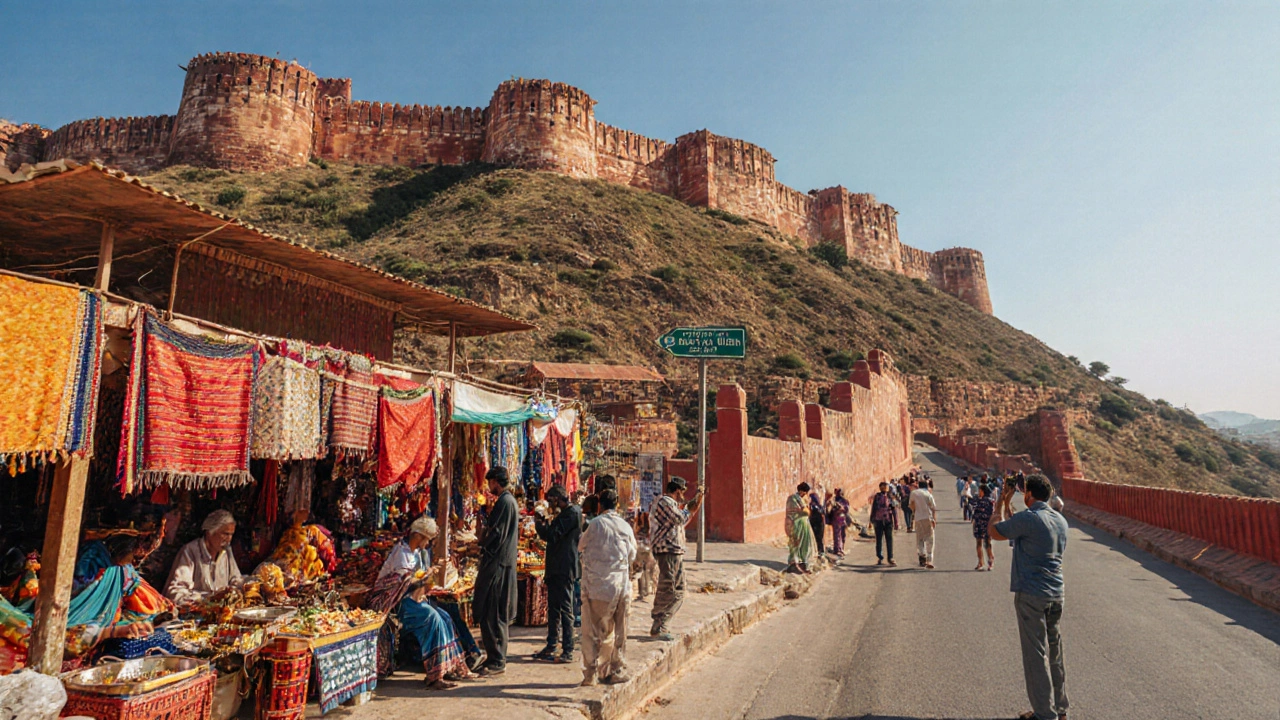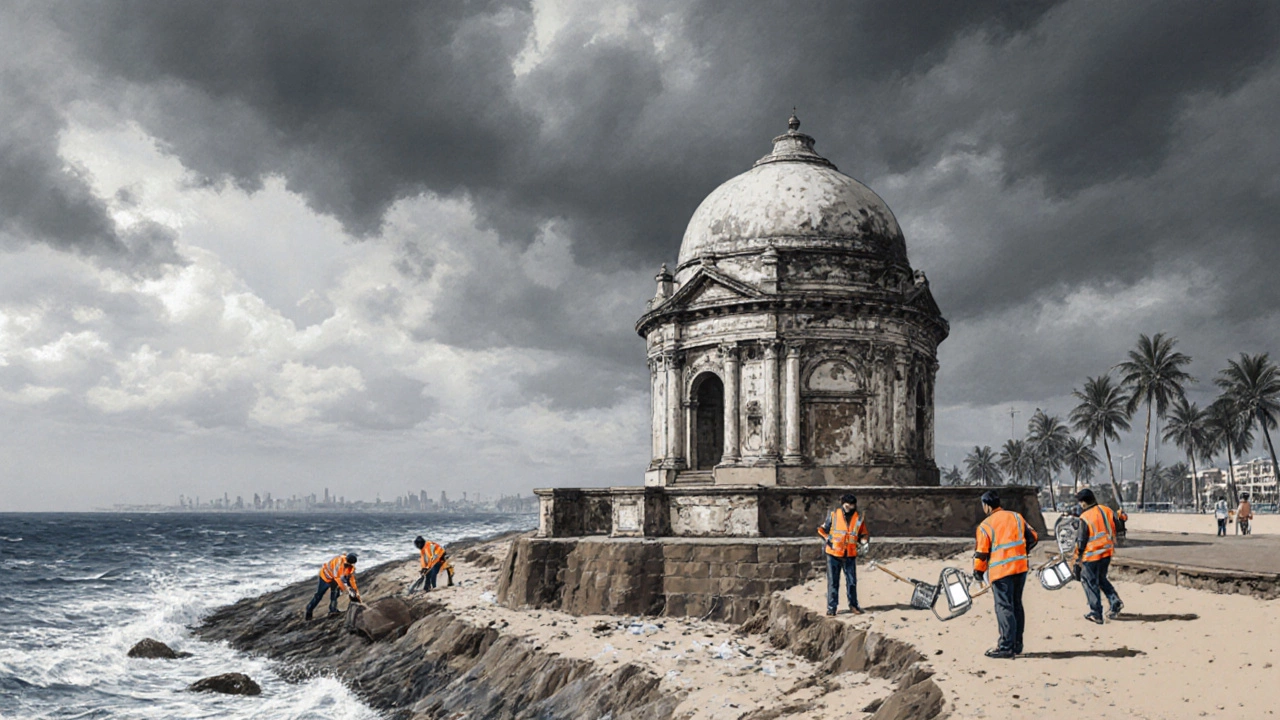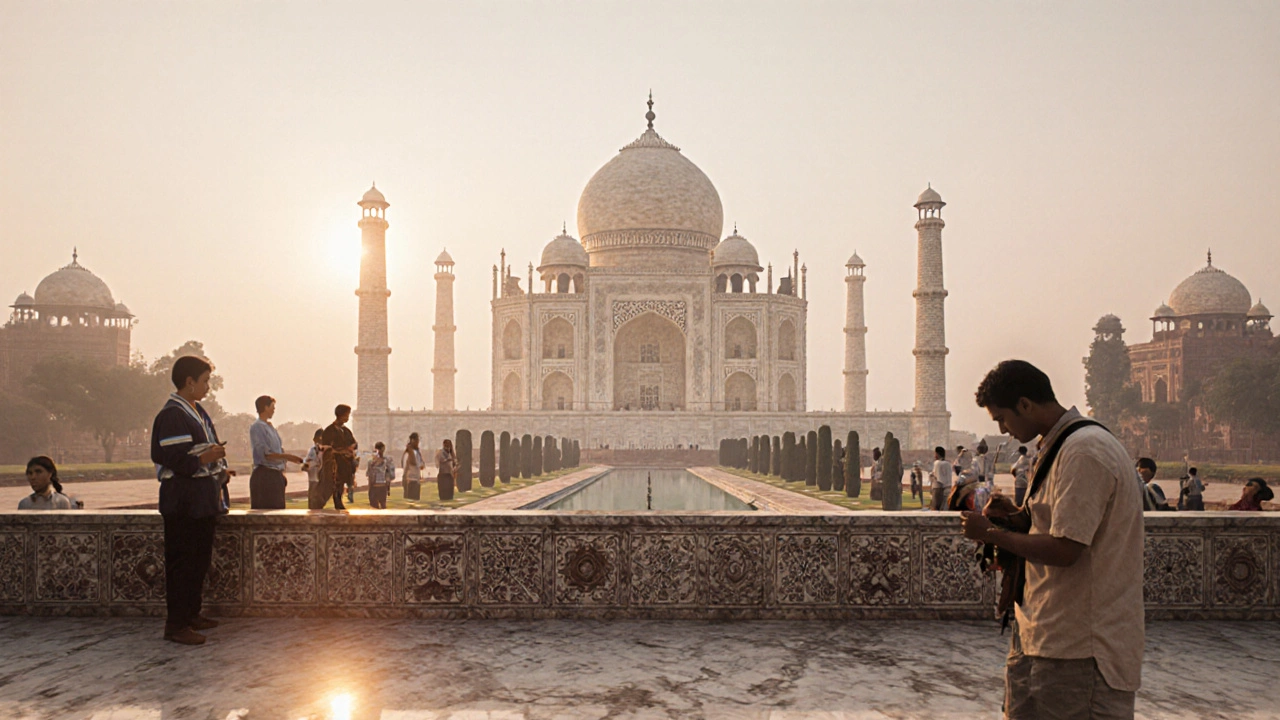Heritage Site Explorer
Did You Know?
India has 31 cultural, 4 natural, and 2 mixed World Heritage Sites as of 2025.
These sites contribute over $10 billion annually to India's economy through tourism.
India’s landscape is dotted with centuries‑old temples, forts, caves and cities that tell a story of civilizations, art and faith. But why do these heritage sites matter beyond pretty pictures? In the next few minutes you’ll see how they shape culture, boost economies, educate generations and anchor a shared national identity - and what you can do to keep them thriving.
Cultural Significance - Living History
When you step onto the marble platform of Taj Mahal is an iconic Mughal mausoleum built in the 17thcentury, symbolising love and architectural brilliance, you’re not just looking at a building; you’re touching a narrative that spans poetry, politics and craftsmanship. Similarly, the Khajuraho Group of Monuments a cluster of Hindu and Jain temples from the 10th‑12th centuries, renowned for intricate stone carvings reveals the social values and artistic daring of medieval India.
These sites act as open‑air museums where myths become tangible. They preserve dialects, rituals and art forms that would otherwise disappear. For example, the Ajanta Caves a series of 2nd‑century Buddhist rock‑cut caves, celebrated for frescoes that document early Indian life provide scholars with visual records of clothing, architecture and daily activities from an era with few written sources.
Because heritage sites are anchored in local communities, they help maintain living traditions. The annual dance festivals at Hampi a UNESCO World Heritage ruin of the Vijayanagara Empire, showcasing stone market streets and grand palaces keep centuries‑old music, craft and cuisine alive, turning history into a daily experience for residents and visitors alike.
Economic Impact - Tourism that Pays Off
Heritage tourism is a major revenue generator for India. In 2023, UNESCO‑listed sites attracted over 50million domestic and international visitors, contributing roughly $10billion to the national economy. The heritage sites India keyword reflects this economic weight. Ticket sales, guided tours, accommodation, and local handicrafts create jobs across the value chain.
Take the Forts of Rajasthan a group of hilltop forts and palaces spanning the 11th‑18th centuries, famed for their grandeur and strategic architecture. They draw heritage‑focused travelers who stay in boutique hotels, dine on regional cuisine and purchase hand‑loom textiles, injecting money directly into rural economies. The resulting multiplier effect often reaches neighboring villages where artisans and farmers benefit from increased demand.
Beyond direct spending, heritage sites boost infrastructure development. Roads, signage, sanitation and internet connectivity improve for locals as governments prioritize visitor experience. These upgrades raise living standards and open up new business opportunities, from bike rentals to heritage‑themed cafés.

Educational & Research Value - Learning from the Past
From archaeology to climate science, heritage sites provide vital data. The Indian Archaeological Survey the government body responsible for excavation, preservation and study of historical sites across India conducts research at locations like the ancient port city of Mahabalipuram a 7th‑century UNESCO site famous for rock‑cut temples and monolithic shrines, uncovering trade routes that linked India to Southeast Asia.
Students across the country use these locations as field‑trip classrooms. Learning about the engineering of the Great Living Chola Temples a collection of 11th‑12th century South Indian temples celebrated for bronzework and architecture gives architecture students real‑world examples of load‑bearing stone construction.
Heritage sites also serve as climate laboratories. The stone decay patterns at Ellora Caves a UNESCO complex of Buddhist, Hindu and Jain rock carvings dating from the 5th‑10th centuries help scientists model how humidity and pollution affect limestone, informing preservation strategies worldwide.
National Identity & Community Pride
India’s diversity is stitched together by shared symbols. Heritage sites act as focal points for collective memory. The silhouette of the Taj Mahal appears on postcards, school textbooks and even fashion prints, reinforcing a sense of “We are part of this story.”
Local festivals tied to heritage monuments amplify community cohesion. During the annual Pushkar Camel Fair, the ancient Brahma Temple a rare temple dedicated to the Hindu creator god, located in the desert town of Pushkar becomes a hub for rituals, music and trade, reminding residents of centuries‑long traditions.
When a site is recognized by UNESCO, residents often experience a boost in pride and global visibility. This recognition can lead to community‑led conservation projects, such as the restoration of the wooden doors at Meenakshi Amman Temple a sprawling 17th‑century Hindu temple complex in Madurai, known for its towering gopurams, where locals organize fundraising drives and volunteer clean‑ups.
Conservation Challenges & Sustainable Management
Preserving heritage isn’t easy. Climate change brings more intense monsoons and heat, accelerating stone erosion at coastal sites like Chennai Marina Beach Heritage Zone an area containing historic colonial structures and early‑20th‑century monuments. Air pollution in megacities also darkens marble and corrodes metalwork.
Rapid urbanisation puts pressure on land around sites. Illegal constructions near the Khandala Caves a lesser‑known rock‑cut sanctuary in Maharashtra, vulnerable to encroachment threaten structural stability.
Funding gaps remain a hurdle. While the central government allocates a heritage budget, many sites rely on state resources and private donations. The lack of consistent maintenance leads to problems like water leakage in the upper chambers of the Brihadeeswarar Temple a 11th‑century Dravidian temple in Thanjavur, famed for its massive vimana tower, which requires specialized conservation expertise.
To address these issues, India has adopted the “Heritage Management Plan” framework, integrating community participation, scientific monitoring and tourism regulation. For example, the introduction of visitor caps at the Red Fort the historic Mughal citadel in Delhi, a UNESCO World Heritage site since 2007 helps reduce wear while still allowing public access.

How You Can Support Heritage Preservation
Even if you’re not a historian, you can help keep these treasures alive:
- Travel responsibly: Stick to marked paths, don’t touch carvings, and follow local guidelines.
- Buy authentic souvenirs: Choose crafts made by local artisans, which funds community economies.
- Donate or volunteer: Organizations like the Society for the Preservation of Indian Heritage a non‑profit group that funds restoration projects across the country welcome contributions.
- Spread awareness: Share stories and photos that highlight the cultural value of sites you visit.
- Advocate for policy: Support legislation that allocates more budget for heritage conservation and climate‑resilient preservation.
Quick Comparison of Heritage Site Types in India
| Type | Primary Value | Number of Indian Sites (2025) | Typical Visitor Experience |
|---|---|---|---|
| Cultural | Historical architecture, art, religious significance | 31 | Guided tours, museum‑style interpretation |
| Natural | Outstanding natural beauty, biodiversity | 4 | Eco‑trekking, wildlife spotting |
| Mixed | Combined cultural & natural importance | 2 | Integrated heritage & nature walks |
Frequently Asked Questions
Why does UNESCO designation matter for Indian heritage sites?
UNESCO status raises global awareness, attracts funding, and obliges the Indian government to meet international conservation standards, which together boost protection and tourism.
How do heritage sites contribute to local economies?
They generate income through ticket sales, guided tours, hospitality services, and sales of local handicrafts, creating jobs directly and indirectly in surrounding villages.
What are the biggest threats to Indian heritage sites today?
Climate‑induced weathering, air pollution, urban encroachment, inadequate funding, and unmanaged visitor flows are the primary challenges.
Can tourists help with preservation while visiting?
Yes-by following site rules, supporting local artisans, opting for eco‑friendly travel options, and donating to reputable heritage NGOs.
Where can I find reliable information about ongoing conservation projects?
Web portals of the Indian Archaeological Survey, UNESCO India office, and recognized NGOs such as the Society for the Preservation of Indian Heritage publish regular updates and volunteer opportunities.
